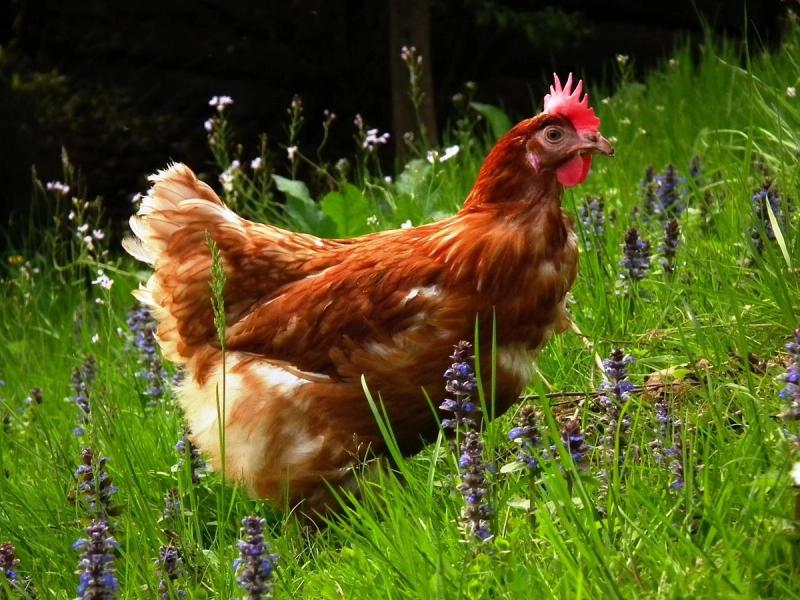Eggs From Backyard Chickens—Protect Your Health & Avoid Drug Residues


Chicken eggs are one of the healthiest foods on the planet. They are high in protein, low in calories, and have zero sugar, carbs, or glutens. In fact, a steady supply of healthy eggs is probably one of the main reasons people keep backyard chickens. However, when chicken keepers fail to follow manufacturer recommendations for medications they use to keep their flock healthy, drug residues can undermine the safety of this otherwise healthy food. Drug residues in chickens, their eggs, and in other food animals have been addressed by the USDA and its Food Animal Residue Avoidance and Depletion program.

Medication Use in Backyard Chickens
As human consumption of eggs from backyard chickens rises, it becomes more important for veterinarians to be able to advise their clients on safe practices. Central to these concerns is understanding the potential consequences of eating eggs from medicated birds and educating backyard farmers about what to consider when treating their birds with over-the-counter medications.
Poultry veterinarians may use drugs to combat disease, overcome or prevent parasitic infections, or alleviate pain and suffering in an injured bird. Bird owners may also elect to use over-the-counter medications that are available to treat various conditions in chickens. While modern veterinary drugs can be life-saving or prevent unnecessary pain and suffering, these medications must be used appropriately to avoid potentially adverse effects in both humans and animals.
Indirect Drug Exposure
In addition to exposure through intentional use of drugs, indirect drug exposure can occur when free-ranging chickens inadvertently consume materials that contain drug products—a common occurrence might happen, for example, when a chicken eats manure from another animal that was recently treated with oral medications. Humans who eat eggs produced by chickens in non-commercial settings should be aware of potential such contaminants. Because humans can be exposed to drug residues by eating eggs from hens exposed to medications, eggs might need to be discarded for a period of time after exposure. Drugs are absorbed into the animal's body, where they can affect multiple systems, including the reproductive organs where eggs are formed.
Adverse effects from exposure to drug residues in food may be immediate and quite severe, such as an allergic reaction to antibiotics like penicillin. However, the long-term effect of prolonged exposure can be a greater concern. In all food-producing animals treated with medications, sufficient time must be allowed for the animal to excrete the drug from its body so that concentrations in the tissues and eggs can drop to concentrations that are at or below levels that are safe for consumption. This is called the “withdrawal interval.”
Withdrawal Intervals
Safe levels are determined by scientific studies designed to determine how much of a specific drug a human can be exposed to over a lifetime without any adverse effects. This is a conservative approach that helps us to understand any potential risks to human health.
All veterinary drugs approved for use in food-producing animals by the Food and Drug Administration (FDA) have a withdrawal time on the label to inform users of how much time must elapse between administering the last dose and collecting any food products from the treated animal. These are based on human health studies and studies of how fast treated animals excrete the drug.
Unfortunately, very few drug products on the market both meet the medical needs of these hens and are practical to use. For example, dosing instructions may not be suitable for smaller flocks kept in free-range systems. Part of this challenge is due to the fact that most FDA-approved medications for laying hens are designed to meet the needs of large-scale operations. In this setting, mass treatment of a large numbers of birds—sometimes thousands—is the rule. Additionally, withdrawal time for eggs can be different based on the production aspects of a layer facility than those of a backyard flock.
Issues in Smaller Production Settings
A good example of a medication that is commonly used in chickens is a dewormers. Very few dewormers are labeled for use in all classes of chickens—that is, for broilers, non-laying hens, and egg-laying hens. The ones that are available contain hygromycin B and are formulated as medicated feeds or premixes. These formulations are practical for commercial production, where the amount and source of food that the birds receive can be tightly regulated. In contrast, a backyard or free range setting usually includes small numbers of birds with access to several different sources of food. In a backyard setting, it is very difficult to ensure that the birds actually consume the product, let alone receive the correct dosage.
Consequently, avian veterinarians treating backyard chickens or owners with companion birds often seek alternative products to treat parasites. Unfortunately, the only other products that are approved for chickens are not labeled for hens laying eggs. These products contain piperazine and dipiperazine. These agents have a listed withdrawal time for meat, but the label doesn't indicate how long the eggs should be discarded to ensure they are safe to eat. Using a drug in a way that is not specifically stated on the FDA-approved label is referred to as “extra-label” usage.
Whether they're in a commercial facility or your backyard, a chicken that lays eggs for human consumption is considered a food animal. Extra-label usage of drugs in food animals is allowed only to treat or prevent imminent disease and not for management purposes or to enhance production. Any deviation from the label instructions for over-the-counter medications, such as those purchased in a feed store, must be prescribed by a veterinarian. This requires that you consult with a veterinarian who must examine the animals or otherwise have sufficient information to make a diagnosis and a treatment recommendation.
Extra-Label Guidance
The veterinarian takes full responsibility for the safety and efficacy of that treatment and must provide detailed instructions for administering the drug, including a recommended withdrawal interval. The veterinarian must base their withdrawal interval recommendation on scientific data. If the FDA has not approved the drug for laying hens, this information is typically unavailable from the pharmaceutical company. In these cases, veterinarians look for data in the public domain, including papers published in peer-reviewed scientific journals and summaries of data submitted for drug approval in other countries. Most veterinarians do not have such data at their fingertips, but they can contact the Food Animal Residue Avoidance Databank (FARAD) for help.
FARAD is a national program that assists veterinarians, livestock producers, and state and federal regulatory and extension specialists to avoid drug residue violations and pesticide contamination of animal-derived food products like milk, honey, and eggs. This service protects public health and helps minimize antibiotic resistance. Practicing veterinarians can get free advice from FARAD online or by phone.
When there is uncertainty about the proper withdrawal interval after using drugs in an extra-label manner. or if animals are accidentally exposed to environmental toxins, pesticides, or biotoxins, FARAD can help. This service is especially useful in situations where very few approved products are available, as in treating backyard chicken flocks.
Now that you know how to keep your backyard chickens and eggs healthy, learn tips for eating and selling your organic, farm fresh eggs.
Tags:Chicken Chatter

Acreage Life is part of the Catalyst Communications Network publication family.
















